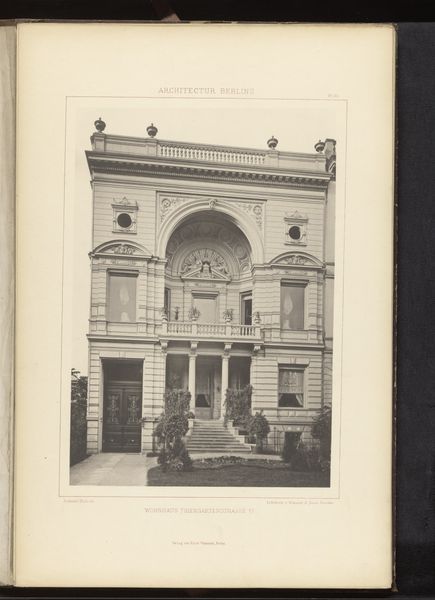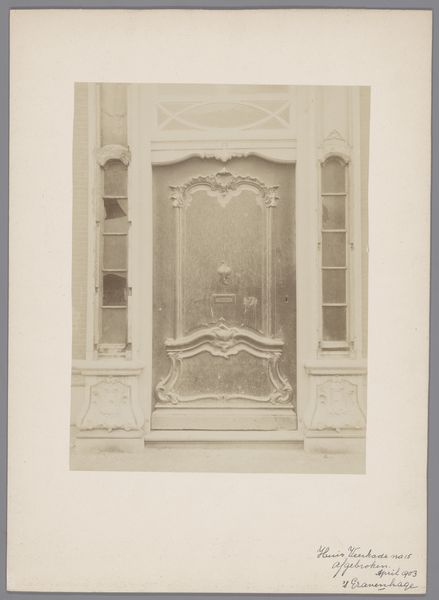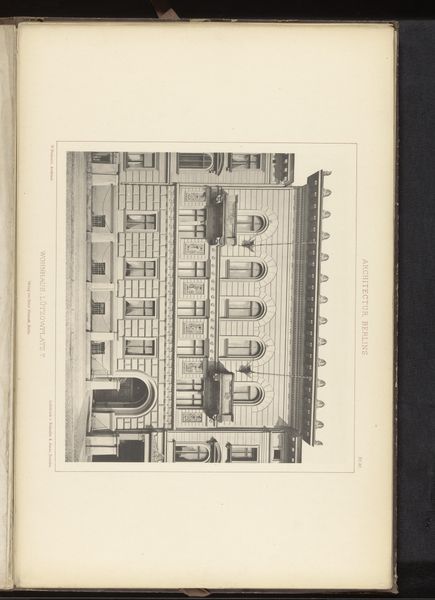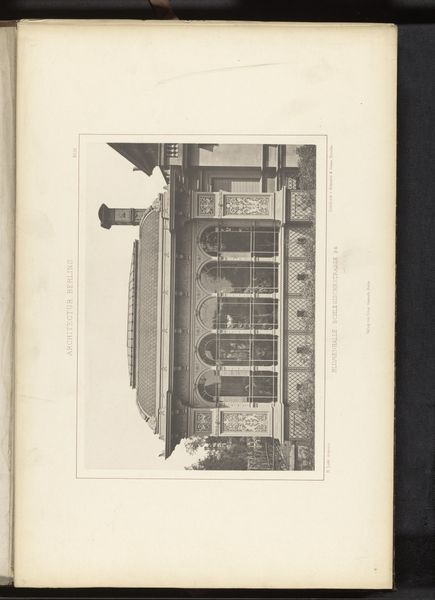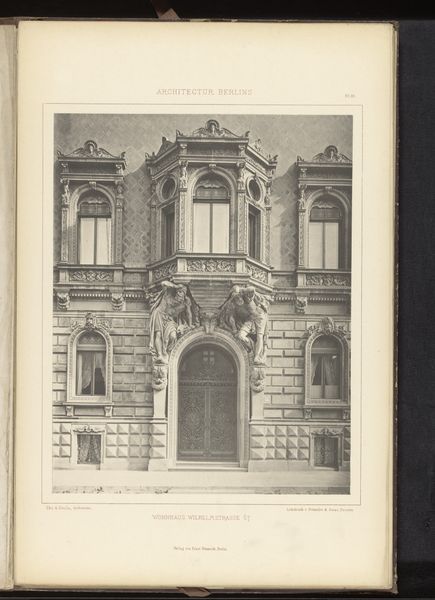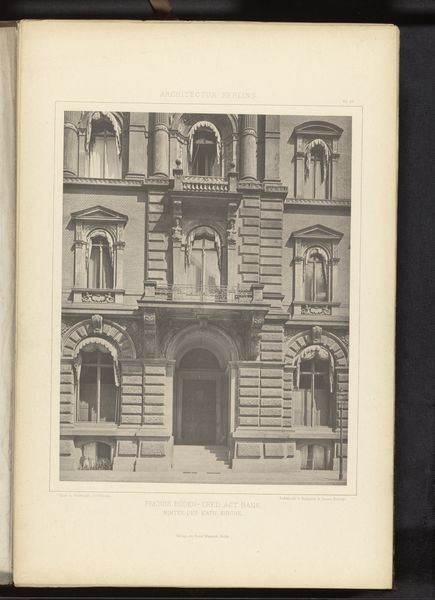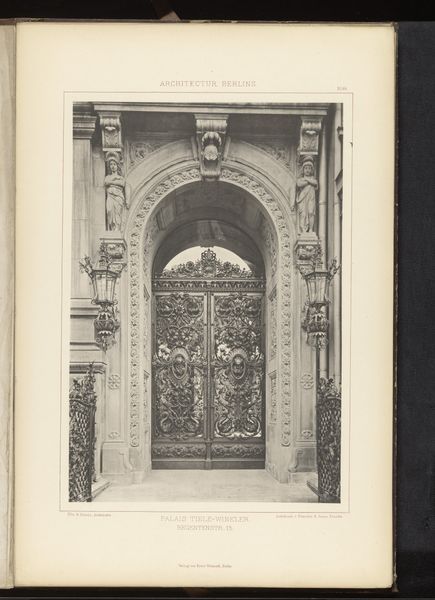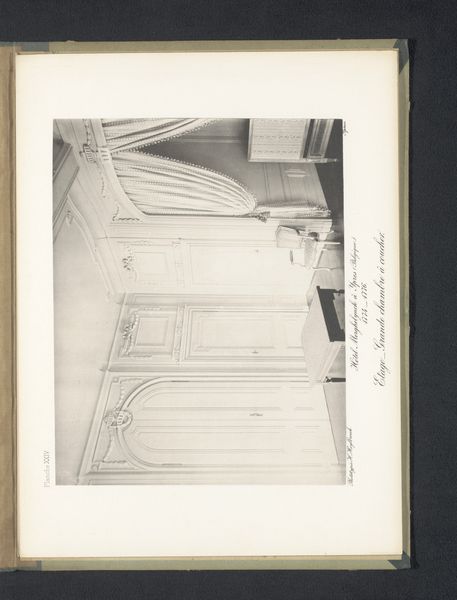
Detail van Villa Monplaisir, Rauchstrasse 16 in Berlijn, Duitsland before 1877
0:00
0:00
Dimensions: height 313 mm, width 243 mm
Copyright: Rijks Museum: Open Domain
Editor: This engraving, entitled "Detail van Villa Monplaisir, Rauchstrasse 16 in Berlijn, Duitsland" is an anonymous work from before 1877, held at the Rijksmuseum. The stark black and white, and the level of architectural detail is quite striking. What can you tell me about it? Curator: Well, immediately, I’m drawn to the production of this image. As a print, its creation necessitated a skilled artisan, translating architectural vision into reproducible form. The social context here is key. This wasn’t just about showcasing aesthetics; it was about disseminating architectural ideas, constructing a visual culture of aspiration and class. The engraving technique itself, laborious and precise, highlights a specific kind of labor tied to the rise of architectural publishing and its relationship to material display. How does the starkness of the engraving, as you mentioned, relate to the building and its aspirational presence? Editor: That's fascinating! I hadn’t thought about the print itself as a form of labor and distribution. Thinking about the crisp black and white, it seems almost to idealize the building, perhaps scrubbing it of the everyday grime and realities of its existence to sell a vision of pure, Neoclassical elegance. Curator: Precisely. And what about the choice of Neoclassicism itself? What kind of social and political structures does that evoke? It’s never simply about aesthetics; it's about using materials and forms to project power, to evoke historical legitimacy. Editor: So, the Neoclassical style would signal a connection to a specific tradition and set of values within that historical moment. This makes me consider the act of representing the architecture through a medium of print to solidify the ideologies being depicted. Curator: Exactly! The print, as a commodity, contributes to the cycle of consumption and the reinforcement of social hierarchies through access to architectural ideals. It all becomes interconnected: labor, materials, dissemination, and the encoding of social messages. I think that considering this all really shapes the way we should analyze and contextualize artworks. Editor: I completely agree! I never would have looked at it this way had you not made me consider its cultural context and construction!
Comments
No comments
Be the first to comment and join the conversation on the ultimate creative platform.
